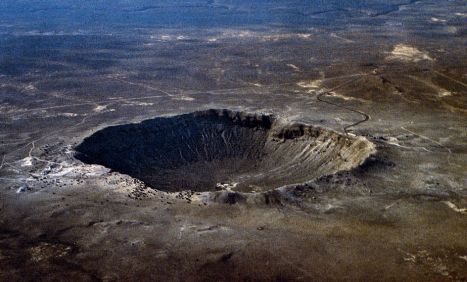
“A meteorite is a solid piece of debris from an object, such as a comet, asteroid, or meteoroid, that originates in outer space and survives its passage through the Earth’s atmosphere and impact with the Earth’s surface or that of another planet.”
Wait, what?
Asteroid, comet, meteroi(te?)d!!
Yeah, well that’s some typical WIKIPEDIA definition of exactly what a meteorite actually is. And while that’s not the answer for “Why do Meteorites fall to Earth?” it is the answer to the question “What are meteorites?” Commonly, meteorites are those objects that lit up in the sky and are noticed as falling stars during the nighttime.
Why don’t they just fall on other planets and things in the vast universe? The thing is that, meteorites, according to Geological Science, are some rocklike objects consisting remains of an earthbound meteoroid either pulled towards by the Earth’s immense gravity or sent off-course by the result of a collision course.
Causes of Meteorite Falling On Earth
The answer to the question that, why does meteorites strike the Earth, may wary. Two primary precursors of the commonly observed phenomenon in the world are as follows.
- Earth’s Gravity
Earth’s immense gravity is what keeps all the people, structures and trees rooted on to the planet. It is also responsible for resulting in the popular phenomenon of apple falling on Isaac Newton’s head and its own scientific discovery! The same gravity can sometimes pull asteroids, comets or meteoroids floating nearby Earth towards itself and thus, resulting in the formation of a bright object that many of us like to call a falling star. - Change of Course of a Comet, Asteroid or Meteorite Because of Some Collision
Sometimes the potential candidates; asteroids, comets and meteoroids; of becoming a meteorite are just too away from our planet that Earth’s gravity isn’t able to make them earthbound. But as universe is the most likely place to have collisions, some of them might eventually send another hurling towards the blue planet as the result of a collision.
What Exactly Are Meteorites?
As defined in the WIKIPEDIA definition stated in the starting of the write-up, a meteorite can be anything ranging from a freely-moving celestial body like asteroid or Sun-circling Meteoroid. Other than planets and stars, our solar system consists of some other heavenly bodies that can be much smaller than our artificial satellites or as big as the Big Ben tower. While Meteoroids circle around the Sun, wandering Asteroids and Comets are freely drifting pieces of rock in our solar system. Here’s how a comet, asteroid and meteoroid differs from one another.
- Asteroid – Rocky bodies consisting metals.
- Comet – Rocky bodies consisting ice and dust, in addition to metals. Featuring an atmosphere is the distinguish quality of a comet from that of an asteroid.
- Meteoroid – Actually, a part of an asteroid or comet tucked-off naturally or as a result of collision of the parent body with another asteroid or comet.
This means that as soon as any of these celestial beings enter our planet, they are called meteorites.
What are the types of Meteorites?
Meteorites can be stony (chondrite), iron, or stony iron (pallasite) depending on the density of metals constituting the objects.